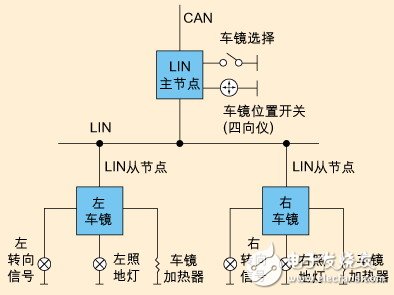Why do engineers in the automotive electronics industry prefer this oscilloscope?
Zhang Hanyu said that the car you choose, let others see what you look like, your experience, and even your future. For engineers in the automotive electronics industry, the same is true for choosing an oscilloscope. Today, how can I use the oscilloscope to "invade" the interior of the car as much as possible?
Today, cars have become the most important means of transportation in human life. Looking at the cars on the street, the major manufacturers have their own tricks. Apply the most popular Internet of Things to the car, which is the “Internet of Vehiclesâ€. For example, the domestic Internet giant Alibaba joined hands with the automobile to cover the concept of the Internet of Everything.
For the time being, most manufacturers' "vehicle networking" is based on the traditional OBD interface as an access point for acquiring on-board status. It is not possible to get all the communication data of the car. So what is the real test demand in the automotive electronics industry, or what do we really “invade†the interior of the car?
First, from the car busIn the communication process of the car, the most familiar one should be the CAN bus. In addition to the CAN bus, there are the following. Next, let's look at it one by one.
1. CAN (Controller Area Network): The CAN controller area network has become an international standard with hundreds of chip types. With high reliability and good error detection capabilities, it is widely used in automotive and embedded applications.
The physical layer and data link layer of the CAN protocol structure have been implemented by hardware, and are currently standardized, with ready-made components (CAN controllers and transceivers). Therefore, the CAN controller and transceiver are added to the MCU, and the corresponding driver is implemented by the software to realize the CAN communication function.
2. LIN (Local Interconnect Network) bus: It is easy to implement, low cost, and can be applied to occasions where real-time performance is not high. Controls such as lights, doors, seats and wipers are the areas of application. As an effective compensation for CAN networks, the biggest advantage is the low cost. The first is mainly because it takes the UART data format, so there is no need for a separate controller, it can be implemented in software on the UART. The use of the LIN bus in a car is shown in Figure 1.

Figure 1 LIN bus in the car
3. FlexRay: is a newer communication communication protocol that spreads faster than CAN and LIN and has higher reliability, but it is also more expensive. Disadvantages of FlexRay: Its electrical characteristics result in limited network length. FlexRay's actual products are only used in BMW, Audi, and Mercedes. At the end of 2009, the alliance of FlexRay was dissolved. The application of the protocol is far less extensive than the first two.
CAN FD (CAN with Flexible Data rate): In the automotive field, as the demand for data transmission bandwidth increases, the traditional CAN bus is difficult to meet this increased demand due to bandwidth limitations. In addition, in order to reduce the bandwidth gap between CAN network (max. 1MBit/s) and FlexRay (max.10MBit/s) networks, BOSCH has introduced CAN FD.
CAN FD inherits the main features of the CAN bus. At the same time, the CAN FD bus compensates for the CAN bus bandwidth and data field length. The CAN FD bus differs from the CAN bus mainly in variable speed and new data field length. Its data frame frame format is shown in Figure 2. .

Figure 2 CAN FD data frame frame format
5. SENT (Single Edge Nibble Transmission): A point-to-point, one-way transmission scheme used to transmit high-definition sensor data between sensors and electronic control units (ECUs) in automobiles.
SENT (SAE J2716) is a new interface standard for automotive sensors that offers excellent EMC characteristics compared to analog outputs and PWM outputs, saves wiring harnesses, saves cost-effective solutions for pin headers, and transmits fault codes to enable sensor systems Has a strong ability to diagnose faults. SENT will widely replace CAN and LIN in local systems.
For the above communication protocol, our commonly used test tool is an oscilloscope. So what kind of oscilloscope do you need to do an accurate test?
Second, the automotive electronics industry requirements for oscilloscope parameters and functions1) Protocol decoding: compatible with all major automotive communication protocols, CAN, LIN, FlexRay, SENT, CANFD;
2) Large memory depth: not simply decoding a frame of waveform, but completely monitoring the entire communication process;
3) Parameter measurement: It is necessary to support the measurement of various parameters such as baud rate and bus load rate.
Brushless BLDC Worm Gear Motors
Worm Gear Motor,Planetary Gear Motor,Brushless Gear Motor,Brushless Bldc Worm Gear Motors
Jinan Keya Electron Science And Technology Co., Ltd. , https://www.keyaservo.com
